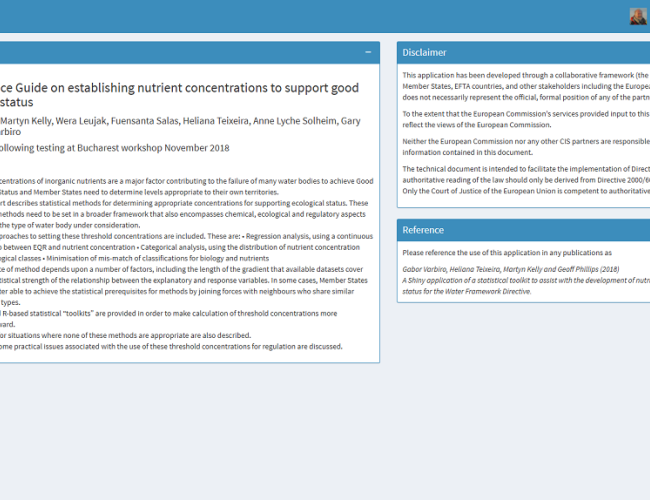
Best practice guide and Nutrient toolkit
Eutrophication is one of the main pressures affecting waters - both freshwater and marine. One key component of any eutrophication management strategy is establishment of realistic thresholds above which negative impacts become significant and provision of ecosystem services is threatened. However, recent reviews of nutrient targets adopted by Member States revealed that a wide range of concentrations are currently used and these are set using different methods. Therefore, it is possible that some nutrient standards are not fit for the purpose of protecting good ecological status, both in the water body itself and in water bodies further downstream.
The Best practice for establishing nutrient concentration to support good ecological status JRC report describes statistical methods for determining appropriate concentrations to support ecological status, as well as provide the most probable ranges of nutrient thresholds supporting good ecological status for different waterbody types.
In addition, Nutrient toolkit is available to make calculation of boundary concentrations more straightforward. The toolkit provides the statistical models, in the form of both a Microsoft (MS) Excel workbook and a series of scripts which can be run using R, an open-source language widely used for statistical analysis and graphical presentation.
A web-based ‘Shiny’ application has also been developed, providing an interactive interface to the R scripts, accessible to those unfamiliar with the R environment. The toolkit has been subjected to extensive testing by Member State experts from across all water categories (lakes, rivers, transitional and coastal waters).
The purpose of this guide and toolkit is to provide technical guidance to enable Member States to establish new, or review existing, boundaries for phosphorus and nitrogen to support good ecological status. This should facilitate the establishment of comparable and consistent boundaries across all Member States. However it is recognized that alternative methods of arriving at boundary values may be valid, and use of this guidance and the associated statistical toolkit is ultimately a decision for the Member State.
Explore further
TOOLKIT Nutrient
Best Practice Guide on establishing nutrient concentrations to support good ecological status



